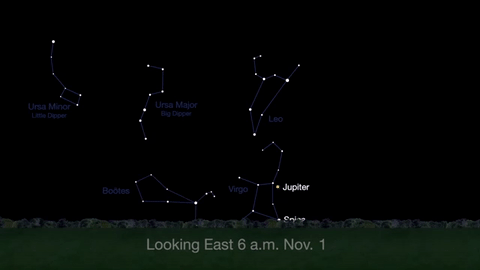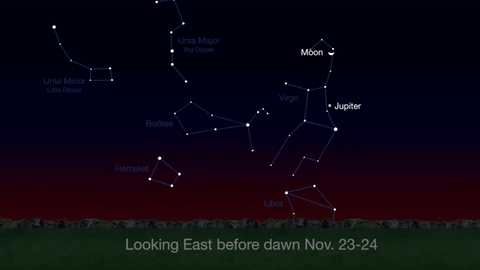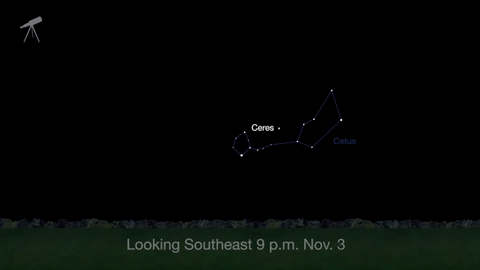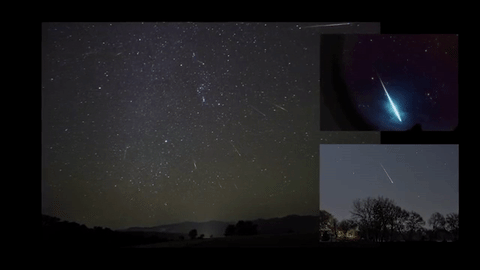Observing The Ozone Hole From Space: A Science Success Story
Observing the Ozone Hole from Space: A Science Success Story
Using our unique ability to view Earth from space, we are working together with NOAA to monitor an emerging success story – the shrinking ozone hole over Antarctica.

Thirty years ago, the nations of the world agreed to the landmark ‘Montreal Protocol on Substances that Deplete the Ozone Layer.’ The Protocol limited the release of ozone-depleting chlorofluorocarbons (CFCs) into the atmosphere.

Since the 1960s our scientists have worked with NOAA researchers to study the ozone layer.

We use a combination of satellite, aircraft and balloon measurements of the atmosphere.

The ozone layer acts like a sunscreen for Earth, blocking harmful ultraviolet, or UV, rays emitted by the Sun.

In 1985, scientists first reported a hole forming in the ozone layer over Antarctica. It formed over Antarctica because the Earth’s atmospheric circulation traps air over Antarctica. This air contains chlorine released from the CFCs and thus it rapidly depletes the ozone.

Because colder temperatures speed up the process of CFCs breaking up and releasing chlorine more quickly, the ozone hole fluctuates with temperature. The hole shrinks during the warmer summer months and grows larger during the southern winter. In September 2006, the ozone hole reached a record large extent.

But things have been improving in the 30 years since the Montreal Protocol. Thanks to the agreement, the concentration of CFCs in the atmosphere has been decreasing, and the ozone hole maximum has been smaller since 2006’s record.

That being said, the ozone hole still exists and fluctuates depending on temperature because CFCs have very long lifetimes. So, they still exist in our atmosphere and continue to deplete the ozone layer.
To get a view of what the ozone hole would have looked like if the world had not come to the agreement to limit CFCs, our scientists developed computer models. These show that by 2065, much of Earth would have had almost no ozone layer at all.

Luckily, the Montreal Protocol exists, and we’ve managed to save our protective ozone layer. Looking into the future, our scientists project that by 2065, the ozone hole will have returned to the same size it was thirty years ago.
Make sure to follow us on Tumblr for your regular dose of space: http://nasa.tumblr.com
More Posts from Nasa and Others
Juno: Inside the Spacecraft

Our Juno spacecraft was carefully designed to meet the tough challenges in flying a mission to Jupiter: weak sunlight, extreme temperatures and deadly radiation. Lets take a closer look at Juno:
It Rotates!

Roughly the size of an NBA basketball court, Juno is a spinning spacecraft. Cartwheeling through space makes the spacecraft’s pointing extremely stable and easy to control. While in orbit at Jupiter, the spinning spacecraft sweeps the fields of view of its instruments through space once for each rotation. At three rotations per minute, the instruments’ fields of view sweep across Jupiter about 400 times in the two hours it takes to fly from pole to pole.
It Uses the Power of the Sun

Jupiter’s orbit is five times farther from the sun than Earth’s, so the giant planet receives 25 times less sunlight than Earth. Juno will be the first solar-powered spacecraft we've designed to operate at such a great distance from the sun. Because of this, the surface area of the solar panels required to generate adequate power is quite large.

Three solar panels extend outward from Juno’s hexagonal body, giving the overall spacecraft a span of about 66 feet. Juno benefits from advances in solar cell design with modern cells that are 50% more efficient and radiation tolerant than silicon cells available for space missions 20 years ago. Luckily, the mission’s power needs are modest, with science instruments requiring full power for only about six out of each 11-day orbit.
It Has a Protective Radiation Vault

Juno will avoid Jupiter’s highest radiation regions by approaching over the north, dropping to an altitude below the planet’s radiation belts, and then exiting over the south. To protect sensitive spacecraft electronics, Juno will carry the first radiation shielded electronics vault, a critical feature for enabling sustained exploration in such a heavy radiation environment.
Juno Science Payload:
Gravity Science and Magnetometers – Will study Jupiter’s deep structure by mapping the planet’s gravity field and magnetic field.

Microwave Radiometer – Will probe Jupiter’s deep atmosphere and measure how much water (and hence oxygen) is there.

JEDI, JADE and Waves – These instruments will work to sample electric fields, plasma waves and particles around Jupiter to determine how the magnetic field is connected to the atmosphere, and especially the auroras (northern and southern lights).
JADE and JEDI

Waves

UVS and JIRAM – Using ultraviolet and infrared cameras, these instruments will take images of the atmosphere and auroras, including chemical fingerprints of the gases present.
UVS

JIRAM

JunoCam – Take spectacular close-up, color images.

Follow our Juno mission on the web, Facebook, Twitter, YouTube and Tumblr.
Make sure to follow us on Tumblr for your regular dose of space: http://nasa.tumblr.com
Special Celestial Events in June 2020
Earth and the Moon are in a constant dance as they orbit the Sun — and in June 2020, they’ll create two special celestial events.
June 20: Summer solstice in the Northern Hemisphere
Earth has a slight tilt as it orbits the Sun, and June is one of two times each year when that tilt is most prominent: a solstice. At the solstices, which happen each year in June and December, Earth’s tilt is at the greatest angle with respect to the plane of its orbit, meaning that one hemisphere is tilted towards the Sun, and the other hemisphere is tilted away.

In the Northern Hemisphere, June 20 is the summer solstice — the Northern Hemisphere is tilted towards the Sun, so the June solstice is the day on which the Northern Hemisphere receives the longest stretch of daylight for the year.
In both hemispheres, the Sun will rise and set at its northernmost point on the horizon. After June 20, the Sun will appear to travel south.

This view from our Earth Polychromatic Imaging Camera on the National Oceanic and Atmospheric Administration's DSCOVR satellite shows the change in Earth’s tilt between the June and December solstices.
During the June solstice, the Southern Hemisphere is tilted away from the Sun, meaning the June solstice marks its shortest stretch of daylight for the year. June is the Southern Hemisphere’s winter solstice.
June 21: Annular solar eclipse in Africa and Asia
The day after the solstice will see another special celestial event: an annular eclipse. Eclipses happen when the Moon lines up just right between the Sun and Earth, allowing it to block out part or all of the Sun’s bright face and cast a shadow on Earth. Though the Moon orbits Earth about once a month, its orbit is tilted by five degrees, so the perfect alignment that creates an eclipse is relatively rare. Often the Moon is too high or low in our sky to block out the Sun.

The June 21, 2020, eclipse is an annular eclipse visible primarily in Africa and Asia. During an annular eclipse, the Moon is too far from Earth and its apparent size is too small to entirely block out the face of the Sun, leaving a sliver of the Sun visible around the Moon’s edge during the eclipse and creating a “ring of fire” effect.

Credit: Dale Cruikshank
Outside the path of annularity, people in other parts of Africa, Asia and even some of Europe and the Pacific have a chance to see a partial solar eclipse, weather permitting. The degree of the partial eclipse depends on how close you are to the path of annularity. Locations far from the path of annularity will see only a small part of the Sun covered by the Moon, while places close to the path will see almost all of the Sun obscured.

No matter where you are, you must take safety precautions to watch the eclipse safely. There is no part of an annular eclipse during which it is safe to look directly at the Sun. You must use a proper solar filter or an indirect viewing method during all phases of the eclipse — even if only a tiny sliver of the Sun is visible around the Moon’s edge, that’s still enough to cause damage to your eyes.
Make sure to follow us on Tumblr for your regular dose of space: http://nasa.tumblr.com
10 Times More Galaxies!
The universe suddenly looks a lot more crowded…
We already estimated that there were about 100 billion galaxies in the observable universe, but new research shows that this estimate is at least 10 times too low!

First, what is the observable universe? Well, it is the most distant part of the universe we can see from Earth because, in theory, the light from these objects have had time to reach Earth.

In a new study using surveys taken by the Hubble Space Telescope and other observatories, astronomers came to the surprising conclusion that there are at least 10 times more galaxies in the observable universe than previously thought. This places the universe’s estimated population at, minimally, 2 trillion galaxies!

The results have clear implications for galaxy formation, and also helps shed light on an ancient astronomical paradox – why is the sky dark at night?
Most of these newly discovered galaxies were relatively small and faint, with masses similar to those of the satellite galaxies surrounding the Milky Way.

Using deep-space images from the Hubble Space Telescope and other observatories, astronomers converted the images into 3-D, in order to make accurate measurements of the number of galaxies at different epochs in the universe’s history.
In addition, they used new mathematical models, which allowed them to infer the existence of galaxies that the current generation of telescopes cannot observe. This led to the surprising conclusion that in order for the numbers of galaxies we now see and their masses to add up, there must be a further 90% of galaxies in the observable universe that are too faint and too far away to be seen with present-day telescopes.

The myriad small faint galaxies from the early universe merged over time into the larger galaxies we can now observe.
That means that over 90% of the galaxies in the universe have yet to be studied! In the near future, the James Webb Space Telescope will be able to study these ultra-faint galaxies and give us more information about their existence.

So back to the question…Why is the sky dark at night if the universe contains an infinity of stars? Researchers came to the conclusion that indeed there actually is such an abundance of galaxies that, in principle, every patch in the sky contains part of a galaxy.
However, starlight from the galaxies is invisible to the human eye and most modern telescopes due to other known factors that reduce visible and ultraviolet light in the universe. Those factors are the reddening of light due to the expansion of space, the universe’s dynamic nature, and the absorption of light by intergalactic dust and gas. All combined, this keeps the night sky dark to our vision.
Make sure to follow us on Tumblr for your regular dose of space: http://nasa.tumblr.com
TweetChat from Space!
Astronaut Scott Kelly, who is currently in the middle of his #YearInSpace mission, hosted his second TweetChat Saturday, Sept. 19, from the International Space Station. He received tons of great questions about his life in orbit, and we’ve selected a few to highlight below:










For regular updates on Kelly’s one-year mission aboard the space station, follow him on social media: Facebook, Twitter, Instagram.
Make sure to follow us on Tumblr for your regular dose of space:http://nasa.tumblr.com
How Well Do you Know Neptune?

Dark, cold and whipped by supersonic winds, Neptune is the last of the hydrogen and helium gas giants in our solar system. More than 30 times as far from the sun as Earth, the planet takes almost 165 Earth years to orbit our sun! In fact, in 2011, Neptune completed its first orbit since its discovery in 1846.

Here are a few things you might not know about the windiest planet:
If the sun were as tall as a typical front door, the Earth would be the size of a nickel and Neptune would be about as big as a baseball.
Neptune orbits our sun, a star. Neptune is the eighth planet from the sun at a distance of about 4.5 billion km (2.8 billion miles) or 30.07 AU.
One day on Neptune takes about 16 hours (the time it takes for Neptune to rotate or spin once)
Neptune makes a complete orbit around the sun (a year in Neptunian time) in about 165 Earth years (60,190 Earth days)
Neptune has six rings
Voyager 2 is the only spacecraft to have visited Neptune
Neptune has 13 moons. They are named after various sea gods and nymphs in Greek mythology
Did you know that Neptune has storms?

Similar to Jupiter, Neptune has storms that create gigantic spots in its atmosphere…well, it did. When Voyager 2 flew past Neptune in 1989, it tracked and imaged the “Great Dark Spot” — a storm larger than the entire Earth! When the Hubble Space Telescope imaged Neptune the spot had disappeared, only to be replaced with two smaller storms, which in turn also disappeared.
Make sure to follow us on Tumblr for your regular dose of space: http://nasa.tumblr.com
What challenges have you overcame to get to the job that you have now? Love from Ireland ❤️
First piece of Orion’s Artemis III pressure vessel arrives at NASA’s Michoud Assembly Facility in New Orleans. https://blogs.nasa.gov/artemis/2020/08/25/first-piece-of-artemis-iii-orion-delivered-to-nasa/
Spacewalk Friday: Installing a New "Parking Spot" on Station
This Friday, Aug. 19, two U.S. astronauts will install a new gateway for American commercial crew spacecraft at the International Space Station.

Commercial crew flights from Florida’s Space Coast to the International Space Station will restore America’s human spaceflight launch capability and increase the time U.S. crews can dedicate to scientific research.

The adapter being installed (imaged below) was launched on a SpaceX Dragon cargo spacecraft and arrived on orbit July 20. This ring is known as an International Docking Adapter, or IDA, and its main purpose is to provide a port for spacecraft bringing astronauts to the station in the future. Outfitted with a host of sensors and systems, the adapter is built so spacecraft systems can automatically perform all the steps of arrival and docking with the station without input from the astronauts.
NASA astronauts Jeff Williams and Kate Rubins will perform the spacewalk to install the equipment this Friday, Aug. 19. This will be the fourth spacewalk in Williams’ career and the first for Rubins.

Four previous spacewalks...like the one below...helped set the stage for installation of this docking adapter. During those previous spacewalks, other crew members laid hundreds of feet of power and data cables outside the space station.

On Wednesday, the robotics team using the Canadarm2 and its attached “Dextre” manipulator, will reach into the SpaceX Dragon trunk and pull out the docking adapter and position it for Friday’s spacewalk activities.

The morning of the spacewalk, while the astronauts are getting suited up, the robotic arm will position the docking adaptor near the port so that it will be ready for installation.

The two astronauts will venture outside the space station to install the first International Docking Adapter (IDA). This new adapter port will provide a parking space for U.S. Commercial Crew vehicles.
Watch LIVE!
Coverage of the spacewalk begins at 6:30 a.m. EDT on Friday, Aug. 19; with the spacewalk scheduled to begin at 8:05 a.m. EDT. Stream live online HERE.
Make sure to follow us on Tumblr for your regular dose of space: http://nasa.tumblr.com
sorry, i don't know much about earth science (though it sounds very intriguing), but - what exactly is it that you do? does it take a lot of time? is it fun but challenging? was it hard to get your job? have you always wanted to work with earth science?
What’s Up for November 2016
What’s Up for November: Venus at sunset, Jupiter at dawn, your last evening glimpse of Saturn until spring, and more meteors!

Through November 3, catch glimpses of a gibbous Venus, a crescent moon and ringed Saturn in the southwest sky just after sunset.

Wake up before sunrise every day this month to see Jupiter just above Spica, the brightest star in the constellation Virgo, shining in the east-southeast sky.

Just before dawn on November 23-24, see the waning crescent moon just above Jupiter.

November is a great time to see the constellation Ceres as it glides past Cetus, the Whale and you will be able to see the dwarf planet move relative to the background stars, but you’ll need a telescope for this one.

This month, just like last month, there will be three meteor showers--the Northern Tuarids, the Leonids and the November Orionids.

Watch the full November “What’s Up" video for more:
Make sure to follow us on Tumblr for your regular dose of space: http://nasa.tumblr.com.
-
 burger-boy-jones liked this · 3 years ago
burger-boy-jones liked this · 3 years ago -
 fishyfiash reblogged this · 3 years ago
fishyfiash reblogged this · 3 years ago -
 earthisourhospital liked this · 4 years ago
earthisourhospital liked this · 4 years ago
Explore the universe and discover our home planet with the official NASA Tumblr account
1K posts